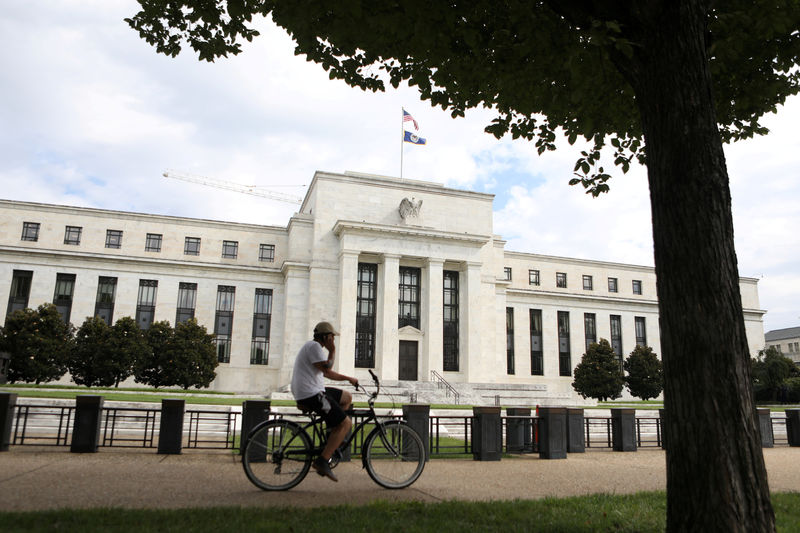(Bloomberg) -- Asset managers who’ve guarded against inflation during a decade of easy money and ballooning deficits have little to show for their efforts. That’s still not stopping some from hedging that risk.
Thirty-year market veteran Matthew McLennan of First Eagle Investment Management is among those warning price pressure are coming down the road. He’s betting easy money and further hits to productivity will spark inflation, making bigger companies with pricing-power and competitive advantage a good wager. He’s also piling into gold as a pure hedge against the erosion of value caused by inflation.
McLennan is in the minority. The Federal Reserve’s aim to let inflation run hot draws mostly derision across Wall Street after the central bank has failed to lift prices toward its 2% target for years. Why will this time be different? Add growing productivity bottlenecks into the mix with America’s surging deficit, a long-running problem of course, and the fact that the U.S. dollar is losing it’s luster.
“If you think about what the Fed’s inflation averaging means, it means they might be happy to see inflation move over time from 1% to 2% to 3% to 4%, while interest rates remain close to zero,” said McLennan, head of the global value team at First Eagle, which manages about $101 billion in assets. “That also means that real interest rates go down more.”
The fresh wave of deglobalization underfoot and second phase pandemic affects both bode poorly for productivity, said McLennan, who was co-portfolio manager of the global equity partners group at Goldman Sachs (NYSE:GS) Asset Management in London prior to joining First Eagle in 2008. That means, for him, that inflation reignites amid a backdrop of slow economic growth.
Continued weakness in the dollar, with the Bloomberg Spot Dollar Index down about 9% from this year’s high in March, buoys inflation through rising import prices as well.
Among the array of products McLennan helps manage is the $43 billion Global Fund, which had gold as it’s biggest holding at about 13%, according to Bloomberg data as of Aug. 31. Another one he steers, the U.S. Value Fund, had Oracle Corp (NYSE:ORCL)., Comcast Corp (NASDAQ:CMCSA) and Colgate-Palmolive (NYSE:CL) Co. as it top three holdings.
The Fed targets inflation as measured by the personal consumption expenditure price index. It also pays close attention to a core reading of that gauge which strips out volatile food and energy prices. Both barometers have plummeted since the pandemic.
There are other notable investors and corporate heads warning on inflation. Earlier this month Stan Druckenmiller said there’s a chance that inflation could hit 5% to 10% in the next four to five years. And even one firm moved all its treasury into Bitcoin given inflation makes cash a losing bet now.
McLennan prefers gold over other favored fixed-income hedge vehicles like Treasury inflation-protected securities (TIPS), given there’s a limited supply of the shiny metal. The Fed’s monetary stimulus already pushed key measures of the U.S. money supply up by double digits.
“The rate of supply growth of gold is less that 2% a year, bringing us back to the idea of scarcity value,” McLennan said.
Traders see consumer price inflation averaging about 1.6% over the next 10 years, based on so-called breakeven rates garnered by TIPS and nominal Treasuries. That’s down from an 8-month high on Sept. 1. Gold prices have also ebbed, both likely driven lower in part on the inability of Congress to agree on a phase four fiscal stimulus package.
The global recovery also risks losing steam as virus cases rise and some nations roll back reopening measures. The U.S. presidential election is another wild card.
“If we get a Democrat clean sweep it’s more likely than not we are going to see more rapid growth in the federal register and regulation” which tend to reduce productivity, McLennan said. Slow grow and rising inflation is probable with “these productivity bottlenecks coming with a Fed that’s willing to let inflation run hot.”
©2020 Bloomberg L.P.
